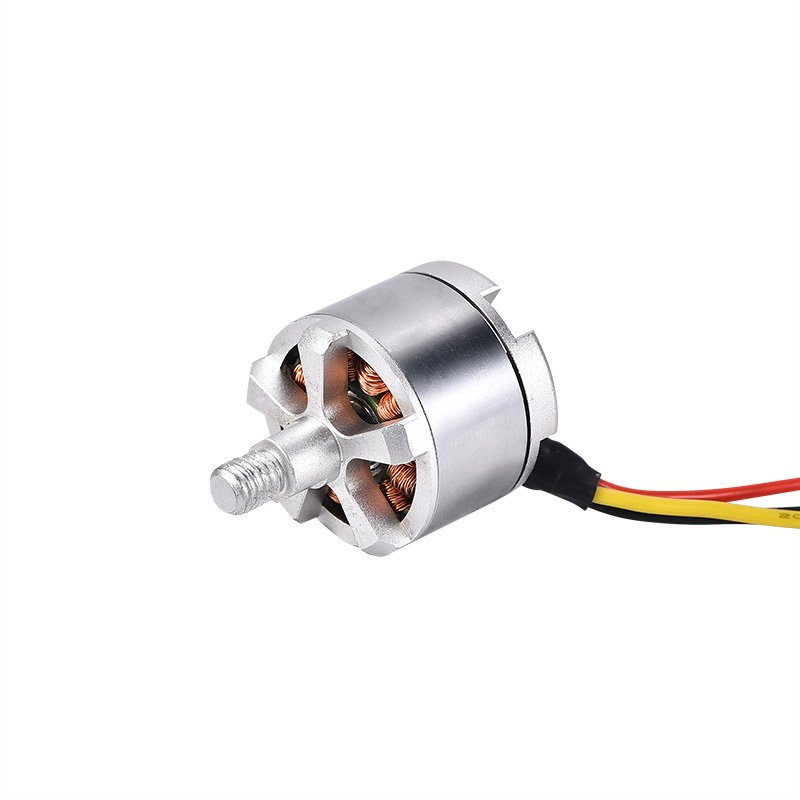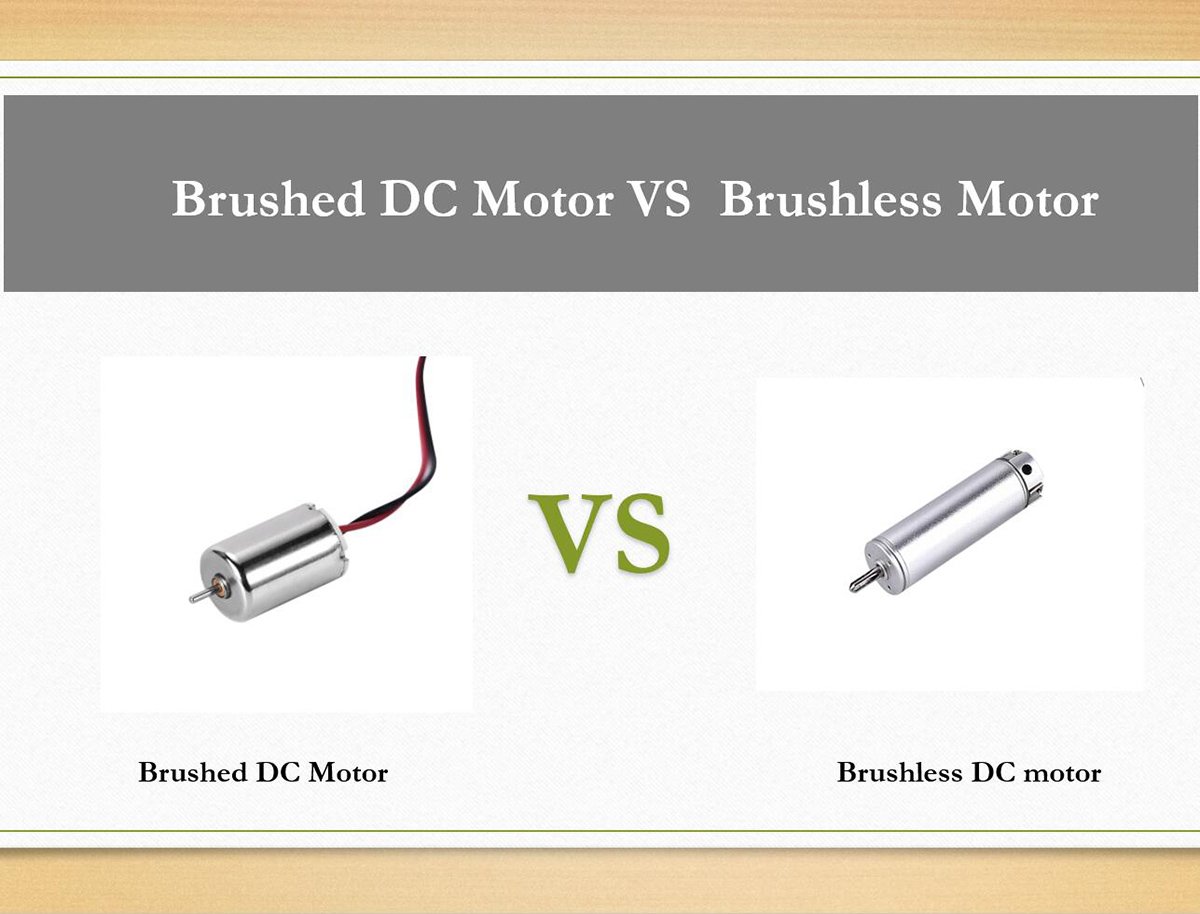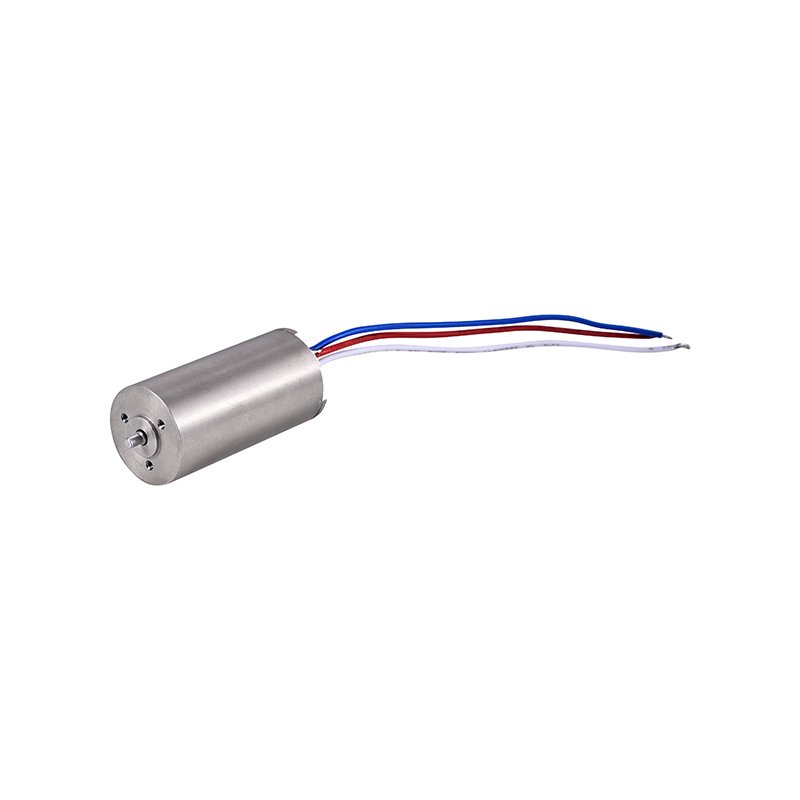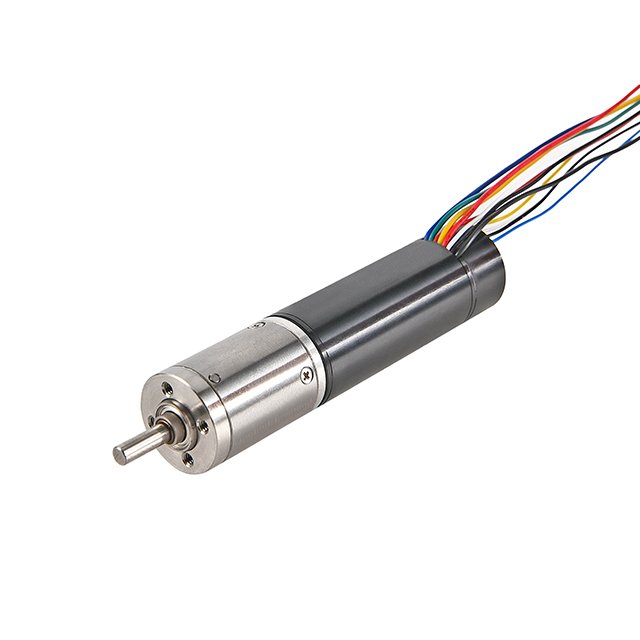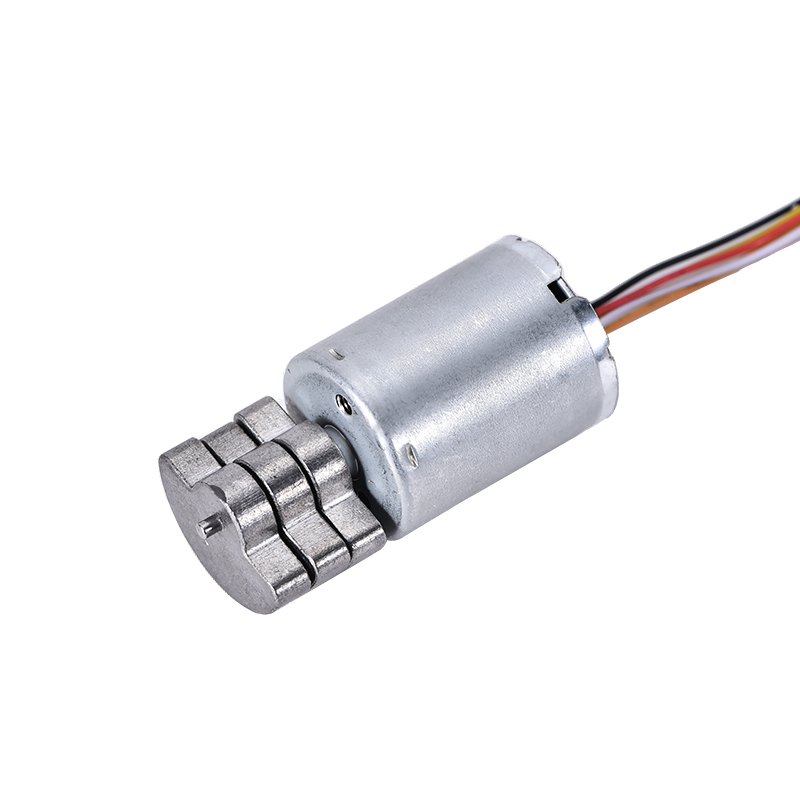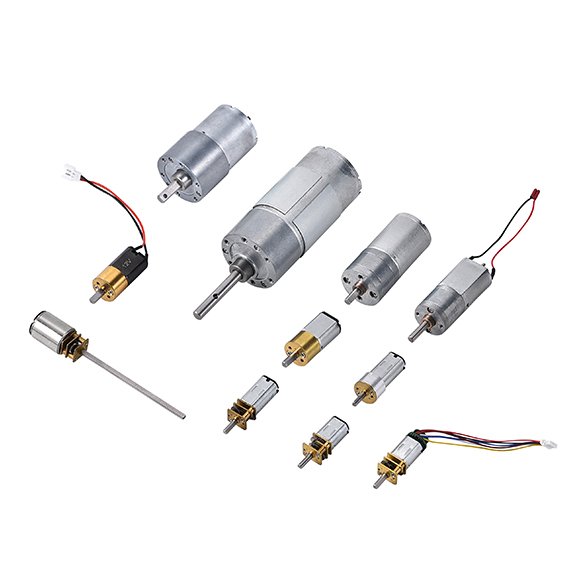Effective brush DC motor maintenance keeps your equipment running at peak performance. You can avoid unexpected breakdowns and high repair costs by practicing regular maintenance.
About 20% of failures in brush dc motor applications come from poor maintenance.
Preventive electric motor maintenance reduces downtime and expenses in brush dc motor operation.
Most users of brush dc motor types support DC Motor Maintenance to extend service life.
Key Takeaways
Regularly inspect brushes and commutators to catch problems early. This practice prevents major damage and extends motor lifespan.
Maintain proper brush alignment and pressure to improve efficiency. Correct settings reduce wear and prevent sparking.
Keep detailed maintenance records to track motor health. This habit helps you schedule proactive upkeep and avoid costly repairs.
1. Inspect Brushes and Commutator
Regular maintenance of brush DC motor types starts with careful inspection of both the brushes and the commutator. You need to inspect and replace brushes and clean the commutator to prevent early failure and extend the lifespan of your motor. When you follow a consistent inspection schedule, you catch problems before they cause major damage.
Brush Wear Signs
You should look for these common signs of brush wear during dc motor maintenance:
Unusual sounds, such as grinding or whining, often signal internal issues.
Excessive vibrations can point to mechanical imbalances.
Physical wear on the brushes or visible scoring on the commutator means you need to clean the commutator and possibly replace the brushes.
Tip: Always clean the commutator when you notice any of these signs. This simple step can prevent further damage and keep your motor running smoothly.
Commutator Condition
A healthy commutator is essential for reliable performance. You should clean the commutator regularly and check for damage. The most common causes of commutator damage include:
Flashover events from heat, carbon dust, or humidity.
High armature current spikes when starting the motor.
Overhauling loads that increase armature current rapidly.
Incorrect interpole adjustment, which can cause arcing.
Inspection Type | Frequency |
|---|---|
Brushed motors | Every 500–1000 hours |
You should base your inspection schedule on how often you use the motor and how critical it is to your operation. Regular maintenance and cleaning the commutator at these intervals will help you avoid costly repairs and maximize your motor’s lifespan.
2. Maintain Proper Brush Alignment and Pressure
Correct brush alignment and pressure play a major role in extending the lifespan of brush dc motor types. You can prevent premature failure and improve efficiency by checking these factors during regular maintenance. Poor alignment and pressure often lead to uneven brush wear, sparking, and commutator damage.
Alignment Techniques
You should use simple techniques to check and adjust brush alignment. Start by inspecting the position of each brush. Brushes must sit evenly on the commutator surface. If you notice uneven wear or sparking, adjust the rack or yoke to achieve the neutral position.
Position brushes outside or between the polarity reference of the armature coils.
Adjust onsite to accommodate changing loads.
Survey carbon brushes to determine the best grade for your application.
Misalignment can cause several problems:
Uneven brush wear and early failure.
Poor electrical contact, which reduces torque output.
Increased sparking and commutator damage.
Tip: Accurate neutral setting prevents sparking at full load and supports efficient operation.
Pressure Adjustment
You must set the correct pressure for each brush to maximize contact area and ensure efficient current transfer. Use the following table to guide your adjustments:
Class of Application | Recommended Brush Pressure |
|---|---|
General Industrial | 2 to 4 lb/in2 (13.8 to 27.6 kPa) |
Mill-type Motors | 3 to 5 lb/in2 (20.7 to 34.5 kPa) |
Railway Service | 3.5 to 9 lb/in2 (24.1 to 62.1 kPa) |
Proper pressure helps you maintain uniform wear, reduce electrical noise, and keep stable performance. Excessive pressure causes rapid wear on the commutator. Insufficient pressure leads to arcing and poor electrical contact.
Regular maintenance of brush alignment and pressure ensures your dc motor maintenance routine supports long-term reliability and optimal lifespan.
3. Check and Replace Bearings
Bearings play a critical role in brush DC motor performance. You must include bearing inspection in your regular maintenance routine to prevent costly failures. Bearings support the motor shaft and reduce friction, so any issue can quickly affect efficiency and lifespan.
Bearing Wear Indicators
You can spot bearing problems early by watching for these signs:
Loud noise from the motor often means defective bearings.
Lack of lubrication causes bearings to wear out faster.
Misalignment in the end frame housings leads to bearing issues.
Increased vibration or heat signals trouble with bearings.
Visible damage or discoloration on bearings shows excessive wear.
Tip: Always grease bearings and check for proper lubrication during electric motor maintenance. This simple step extends bearing life and keeps your motor running smoothly.
Replacement Steps
You should replace bearings as soon as you notice wear indicators. Follow these steps for safe and effective replacement:
Disconnect power and remove the motor from service.
Clean the motor exterior to prevent dirt from entering during maintenance.
Remove the end shields and carefully extract the old bearings.
Inspect the shaft and housing for damage or misalignment.
Lubricate bearings before installing new ones. Use the recommended grease for your motor type.
Install new bearings and reassemble the motor.
Test the motor to confirm smooth operation.
Regular maintenance and proper lubrication help you avoid unexpected breakdowns. When you lubricate bearings and monitor their condition, you support long-term dc motor maintenance and reliable performance.
4. Monitor Insulation Resistance
Regularly checking insulation resistance helps you prevent electrical failures in brush DC motors. This step is a key part of dc motor maintenance and keeps your equipment safe and reliable.
Testing Methods
You should use a megohmmeter to measure insulation resistance. This tool checks the condition of the motor windings and insulation. Follow these steps for effective testing:
Disconnect the motor from the power supply.
Clean the motor exterior to remove dust and moisture.
Connect the megohmmeter leads to the motor terminals and ground.
Record the resistance value.
Note: For safe operation, the insulation resistance value should meet these standards:
Regular testing of insulation resistance is crucial for the upkeep of brush DC motors, especially in industrial settings. It is generally advised to conduct these tests annually. Motors in severe conditions or those used in critical applications may need to be tested more often.
Preventing Electrical Issues
Low insulation resistance can lead to short circuits, arcing, or even motor failure. You can prevent these problems by following a routine maintenance schedule. Always test insulation resistance after cleaning, during scheduled shutdowns, or when you notice abnormal motor behavior. If you find resistance below the recommended value, dry the windings or replace damaged insulation before restarting the motor.
Tip: Keeping insulation resistance within safe limits protects your motor from costly repairs and downtime.
By making insulation resistance checks a regular part of your maintenance routine, you ensure long-term performance and safety for your brush DC motors.
5. Control Motor Temperature
Keeping your brush DC motor at the right temperature is essential for both safety and performance. High temperatures can damage your motor and shorten its lifespan. You need to use effective cooling methods to prevent overheating and keep your equipment running smoothly.
Cooling Methods
You can use several simple methods to control the temperature of your motor:
Install a temperature switch on the outside of the motor. This device alerts you when the motor gets too hot.
Use a high-temperature cut-off switch. This switch will automatically shut off the motor if it reaches a dangerous temperature.
Check the motor’s temperature by hand during operation. If the motor feels too hot, allow it to cool down before restarting.
Tip: Regular maintenance, such as cleaning and lubricating, helps your cooling methods work better.
Overheating Risks
Overheating can cause serious problems for your brush DC motor. You should know the main risks:
High electrical current during heavy loads increases heat in the windings and at the brush-commutator contact.
Hot internal parts can break down insulation and reduce the motor’s magnetic strength.
Poor ventilation and high room temperatures make it harder for the motor to cool down.
Skipping routine maintenance increases the risk of overheating and makes troubleshooting harder.
You can prevent overheating by following these steps and making temperature checks part of your regular maintenance routine. This approach protects your motor and ensures safety for everyone working with the equipment.
6. Ensure Stable Voltage Supply
Voltage Fluctuation Effects
You must keep the voltage supply stable to protect your brush DC motor. Voltage fluctuations put electrical stress on the motor. This stress leads to overheating and faster wear of motor parts. When you run the motor with unstable or low voltage, you shorten its lifespan. The motor draws more current, which causes fluctuating torque and lower speed. Efficiency drops, and the motor’s internal structure can suffer damage.
Voltage fluctuations cause electrical stress and overheating.
Increased current leads to faster wear and reduced efficiency.
Unstable voltage can damage the motor’s internal structure.
Tip: Installing a voltage regulator helps stabilize power input. This step improves motor performance and extends its lifespan.
Protection Tips
You can follow simple steps to ensure a stable voltage supply for your brush DC motor:
Keep the motor and its environment clean to prevent contamination.
Install the motor and its components properly.
Use control methods that regulate voltage supply.
Work in a non-static, protective environment.
Guard exposed circuitry to prevent accidental contact.
Never perform maintenance while power is applied.
Best Practice | Benefit |
|---|---|
Regular inspection | Prevents unexpected failures |
Replace worn brushes | Protects commutator |
Clean commutator | Avoids uneven wear |
Lubricate bearings | Reduces friction |
Check connections | Prevents electrical issues |
You can protect your motor from voltage problems by following these steps. Stable voltage keeps your motor running smoothly and helps you avoid costly repairs.
7. Tighten and Inspect Connections

Loose or damaged connections can cause power loss and lead to unexpected motor failures. You should make connection checks a regular part of your brush DC motor maintenance routine. This step helps you avoid downtime and keeps your motor running efficiently.
Connection Checkpoints
You need to inspect several key areas to ensure reliable operation. Use this checklist during your scheduled maintenance:
Inspect wiring and connections for fraying, corrosion, or loose connections.
Examine insulation for cuts or wear.
Check connectors for rust or corrosion.
Ensure wires are securely attached.
Look for signs of overheating on connections.
Connection Area | What to Check For | Action Needed |
|---|---|---|
Wiring | Fraying, loose ends | Tighten or replace |
Connectors | Rust, corrosion | Clean or replace |
Insulation | Cuts, wear | Repair or replace |
Terminals | Overheating marks | Investigate, tighten |
Routine inspection and tightening of connections improve safety and reduce the risk of electrical faults. You should adjust your inspection frequency based on how often you use the motor and the environment it operates in.
Preventing Power Loss
Power loss often starts with poor connections. When you keep all connections tight and clean, you help your motor deliver consistent performance. You also make troubleshooting easier if problems arise. Regular checks prevent overheating and protect your motor from damage. Always turn off the power before working on connections to ensure safety. By following these steps, you extend the lifespan of your brush DC motor and avoid costly repairs.
8. Keep Maintenance Records
Keeping detailed maintenance records gives you a clear picture of your brush dc motor lifetime. When you track every inspection and repair, you spot patterns and prevent small issues from turning into big problems. Good record-keeping helps you plan maintenance before failures happen, which saves money and keeps your equipment running longer.
Tracking Brush DC Motor Lifetime
You extend brush dc motor lifetime by recording every maintenance activity. This habit lets you:
Catch early signs of wear or damage before they cause breakdowns.
Schedule proactive upkeep, which keeps your motor running at its best.
Improve efficiency and save energy by keeping the motor in top shape.
Reduce the number of replacements, which lowers your long-term costs.
Tip: Consistent records help you prove that you followed the right steps if you ever need to claim a warranty.
Record-Keeping Tips
A good maintenance log includes more than just dates. You should write down every detail that affects your motor’s health. Use this table to guide your entries:
Maintenance Task | Description |
|---|---|
Visual Inspections | Check for visible wear or damage on all parts. |
Electrical Connections | Make sure all wires and terminals are tight and free from corrosion. |
Lubrication | Record when you check and add lubricant to bearings and moving parts. |
Cooling and Ventilation Checks | Confirm that fans and vents work properly to prevent overheating. |
Documentation of Issues | Note any problems or irregularities you find during inspections. |
You should also keep notes about the environment. Avoid using the motor where there is dust, oil, or moisture. Clean surroundings and proper installation help you get the most out of your brush dc motor lifetime.
You boost safety and performance when you follow these eight dc motor maintenance tips. Regular electric motor maintenance lowers downtime and repair costs, extends lifespan, and keeps troubleshooting simple.
Routine inspections help you spot issues early.
Consistent care ensures predictable operation and reduces total ownership costs.
Start your maintenance plan today for reliable results.
FAQ
How often should you inspect brush DC motors?
You should inspect your brush DC motor every 500–1000 hours of use. Check more often if you use the motor in harsh or critical environments.
What are the most common signs of motor trouble?
Unusual noises
Excessive vibration
Overheating
Visible wear on brushes or commutator
Can you extend motor life with simple maintenance?
Yes!
Clean the commutator
Lubricate bearings
Tighten connections
Keep records
These steps help you prevent early failures.
